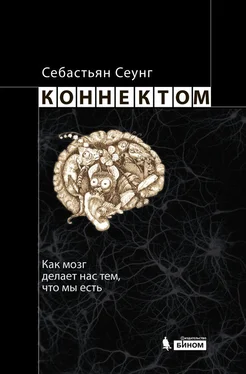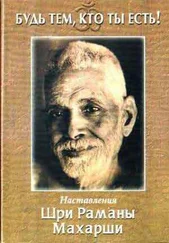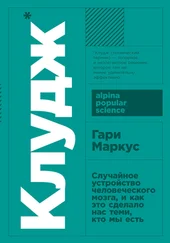196. Leeuwenhoek, A. van. 1674. More Observations from Mr. Leewen hook, in a Letter of Sept. 7. 1674. Sent to the publisher. Philosophical Transactions , 9 (108): 178–182.
197. Legrand, N., A. Ploss, R. Balling, P. D. Becker, C. Borsotti, N. Brezillon, and J. Debarry. 2009. Humanized mice for modeling human infectious disease: Challenges, progress, and outlook. Cell Host and Microbe , 6 (1): 5–9.
198. Leroi, A. 2006. What makes us human? Telegraph , Aug. 1.
199. Leucht, S., C. Corves, D. Arbter, R. R. Engel, C. Li, and J. M. Davis. 2009. Second-generation versus first-generation antipsychotic drugs for schizophrenia: A meta-analysis. Lan cet , 373 (9657): 31–41.
200. Lewis, D. A., and P. Levitt. 2002. Schizophrenia as a disorder of neurodevelopment. Annual Review of Neuroscience , 25: 409.
201. Lichtman, J. W., and H. Colman. 2000. Synapse elimination review and indelible memory. Neuron , 25: 269–278.
202. Lichtman, J. W., J. R. Sanes, and J. Livet. A technicolour approach to the connectome. Nature Reviews Neuroscience , 9 (6): 417–422.
203. Lieberman, P. 2002. On the nature and evolution of the neural bases of human lan guage. American Journal of Physical Anthropology , 119 (S35): 36–62.
204. Lindbeck, A. 1995. The prize in economic science in memory of Alfred Nobel. Journal of Economic Literature , 23 (1): 37–56.
205. Linkenhoker, B. A., and E. I. Knudsen. 2002. Incremental training increases the plasticity of the auditory space map in adult barn owls. Nature , 419 (6904): 293–296.
206. Lipton, P. 1999. Ischemic cell death in brain neurons. Physiological Reviews , 79 (4): 1431–1568.
207. Livet, J., T. A. Weissman, H. Kang, J. Lu, R. A. Bennis, J. R. Sanes, and J. W. Lichtman. 2007. Transgenic strategies for combinatorial expression of fluorescent proteins in the nervous system. Nature , 450 (7166): 56–62.
208. Lledo, P. M., M. Alonso, and M. S. Grubb. 2006. Adult neurogenesis and functional plasticity in neuronal circuits. Nature Reviews Neuroscience , 7 (3): 179–193.
209. Llinas, R., Y. Yarom, and M. Sugimori. 1981. Isolated mamm al ian brain in vitro: New technique for analysis of electrical activity of neuronal circuit function. Federation Proceedings , 40: 2240.
210. Lloyd, Seth. 2006. Programming the universe: A quantum computer scientist takes on the cosmos . New York: Knopf.
211. Lockery, S. R., and M. B. Goodman. 2009. The quest for act ion potentials in C. elegans neurons hits a plateau. Nature Neuroscience , 12 (4): 377–378.
212. Lopez-Munoz, F., and C. Alamo. 2009. Monoaminergic neurotransmission: The history of the discovery of antidep res sants from 1950s until today. Current Pharmaceutical Design , 15 (14): 1563–1586.
213. Lotze, M., H. Flor, W. Grodd, W. Larbig, and N. Birbaumer. 2001. Phantom movements and pain: An fMRI study in upper limb amputees. Brain , 124 (11): 2268.
214. Machin, Geoffrey. 2009. Non-identical monozygotic twins, inter mediate twin types, zygosity testing, and the non-random natur e of monozygotic twinning: A review. American Journal of Medical Genetics, C, Seminars in Medical Genetics , 151C (2): 110–127.
215. Maguire, E. A., D. G. Gadian, I. S. Johnsrude, C. D. Good, J. Ashburner, R. S. J. Frackowiak, and C. D. Frith. 2000. Navigation-related structural change in the hippocampi of taxi drivers. Proceedings of the National Academy of Sciences , 97 (8): 4398.
216. Markoff, J. 2007. Already, Apple sells refurbished iPhones. New York Times, Aug. 22.
217. Markou, A., C. Chiamulera, M. A. Geyer, M. Tricklebank, and T. Steckler. 2008. Removing obstacles in neuroscience drug discovery: The future path for animalmodels. Neuro psychopharmacology , 34 (1): 74–89.
218. Markram, H., J. Lubke, M. Frotscher, and B. Sakmann. 1997. Regulation of synaptic efficacy by coincidence of postsynaptic APs and EPSPs. Science , 275 (5297): 213.
219. Marr, D. 1971. Simple memory: A theory for archicortex. Philosophical Transactions of the Royal Society of London. Series B, Biological Sciences , 262 (841): 23–81.
220. Martin, G. M. 1971. Brief proposal on immortality: An interim solution. Perspectives in Biology and Medicine , 14 (2): 339.
221. Mashour, G. A., E. E. Walker, and R. L. Martuza. 2005. Psy chosurgery: Past, present, and future. Brain Research Review s, 48 (3): 409–419.
222. Masland, R. H. 2001. Neuronal diversity in the retina. Current Opinion in Neurobiology , 11 (4): 431–436.
223. Mathern, G. W. 2010. Cerebral hemispherectomy. Neurology , 75 (18): 1578.
224. Maughan, R. J., J. S. Watson, and J. Weir. 1983. Strength and cross-sectional area of human skeletal muscle. Journal of Physiology , 338 (1): 37.
225. Matzelle, T. R., H. Gnaegi, A. Ricker, and R. Reichelt. 2003. Characterization of the cutting edge of glass and diamond knives for ultramicrotomy by scanning force microscopy using cantilevers with a defined tip geometry: Part 2. Journal of Microscopy , 209 (2): 113–117.
226. Mazur, P. 1988. Stopping biological time. Annals of the New York Academy of Sciences, 541 (1): 514–531.
227. Mazur, P., W. F. Rall, and N. Rigopoulos. 1981. Relative contributions of the fraction of unfrozen water and of salt concentration to the survival of slowly frozen human erythrocytes. Biophysical Journal , 36 (3): 653–675.
228. McClelland, J. L., and D. E. Rumelhart. 1981. An interactive activation model of context effects in letter perception: I. An account of basic findings. Psychological Review , 88 (5): 375.
229. McDaniel, M. A. 2005. Big-brained people are smarter: A metaanalysis of the relationship between in vivo brain volume and intelligence. Intelligence , 33 (4): 337–346.
230. Mechelli, A., J. T. Crinion, U. Noppeney, J. O’Doherty, J. Ash burner, R. S. Frackowiak, and C. J. Price. 2004. Neurolinguistics: Structural plasticity in the bilingual brain. Nature , 431 (7010): 757.
231. Mendez, I., A. Viñuela, A. Astradsson, K. Mukhida, P. Hal lett, H. Robertson, T. Tierney, R. Holness, A. Dagher, J. Q. Tro janowski, et al. 2008. Dopamine neurons implanted into people with Parkinson’s disease survive without pathology for 14 years. Nature Medicine , 14 (5): 507–509.
232. Merkle, R. C. 1992. The technical feasibility of cryonics. Me dical Hypotheses , 39 (1): 6–16.
233. Mesulam, M. M. 1998. From sensation to cognition. Brain, 121 (6): 1013.
234. Meyer, M. P., and S. J. Smith. 2006. Evidence from in vivo imaging that synaptogenesis guides the growth and branching of axonal arbors by two distinct mechanisms. Journal of Neuroscience , 26 (13): 3604.
235. Mezard, M., G. Parisi, and M. A. Virasoro. 1987. Spin glass theory and beyond. Singapore: World Scientific.
236. Micale, M. S. 1985. The Salpêtrière in the age of Charcot: An institutional perspective on medical history in the late ninet eenth century . Journal of Contemporary History , 20 (4): 703–731.
237. Middleton, F. A., and P. L. Strick. 2000. Basal ganglia output and cognition: Evidence from anatomical, behavioral, and clinical studies. Brain and Cognition , 42 (2): 183–200.
238. Miles, M., and D. Beer. 1996. Pakistan’s microcephalic chuas of Shah Daulah: Cursed, clamped, or cherished. History of Psychiatry , 7 (28, pt. 4): 571.
239. Miller, K. D. 1996. Synaptic economics: Competition and co operat ion in correlation-based synaptic plasticity. Neuron , 17: 371–374.
240. Minsky, M. 2006. The emotion machine. New York: Simon & Schuster.
Читать дальше
Конец ознакомительного отрывка
Купить книгу




![Рейчел Херц - Почему мы едим то, что едим [Наука о том, как наш мозг диктует нам, что есть]](/books/390411/rejchel-herc-pochemu-my-edim-to-chto-edim-nauka-o-t-thumb.webp)
![Алан Джасанов - Мозг - прошлое и будущее [Что делает нас теми, кто мы есть]](/books/401119/alan-dzhasanov-mozg-proshloe-i-buduchee-chto-delaet-thumb.webp)






